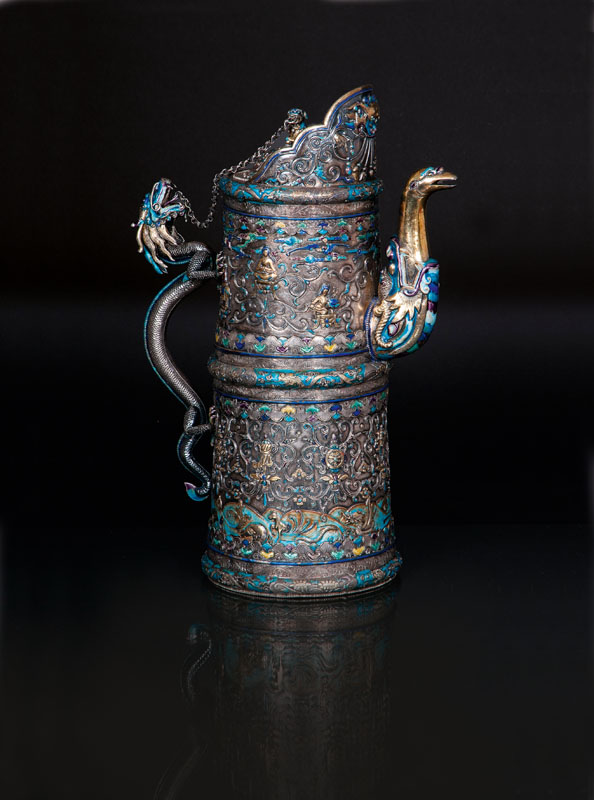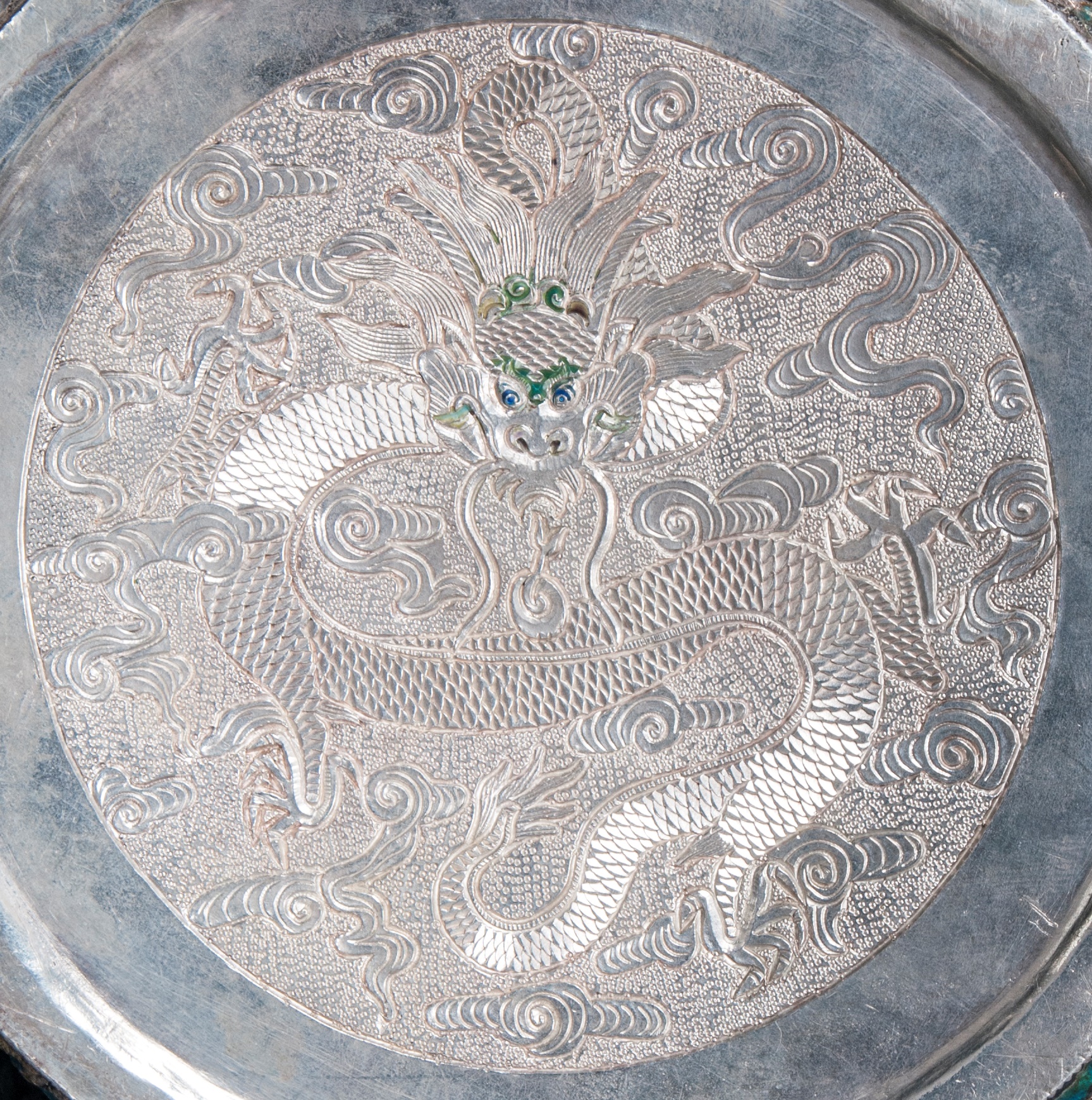An impressive and very rare Tibetan ewer and cover 'Duomuhu'

Lot-No. 269
Proceeds : 52.000 €
China, 19th cent. (Qing Dynasty 1644-1911). Silver, partly gilt and with artistic translucent enamels. Cylindrical body with 2 sections. The top in the shape of a Yüan-crown. The plastical handle in the shape of a dragon. The nozzle likewise as a dragon and phoenix head. A small Fô-dog at the domed cover. At the wall an extremely rich relief with complex iconography. On the lower section a revolving depiction of the '8 Buddhist symbols' on a foliage underground above a wave border with numerous animals. On the upper section bodhisattvas with Buddhist symbols underneath a cloud border with bats. Rich ornamental borders with dragon, chrysanthemums and ruyi. The bottom with a fine relief of a five-clawed dragon. H. 37 cm. - 'Duomuhu' ewers derive from Tibetan Buddhism and became popular through the first Qing emperors. The formerly wooden vessels became prestigious works of art, made out of silver, gold, porcelain or cloisonné (See: Béatrice Quette [ed.], Cloisonné. Chinese Enamels from the Yuan, Ming, and Qing Dynasties, New York et al. 2011, p. 270). The extensive iconograhpy and the high quality of craftsmanship of the present piece points to an important commission, probably as a wedding gift or similar. - Prov.: From an important Swedish collection.
An impressive and very rare Tibetan ewer and cover 'Duomuhu'
An impressive and very rare Tibetan ewer and cover 'Duomuhu'
Lot-No. 269
Proceeds : 52.000 €
China, 19th cent. (Qing Dynasty 1644-1911). Silver, partly gilt and with artistic translucent enamels. Cylindrical body with 2 sections. The top in the shape of a Yüan-crown. The plastical handle in the shape of a dragon. The nozzle likewise as a dragon and phoenix head. A small Fô-dog at the domed cover. At the wall an extremely rich relief with complex iconography. On the lower section a revolving depiction of the '8 Buddhist symbols' on a foliage underground above a wave border with numerous animals. On the upper section bodhisattvas with Buddhist symbols underneath a cloud border with bats. Rich ornamental borders with dragon, chrysanthemums and ruyi. The bottom with a fine relief of a five-clawed dragon. H. 37 cm. - 'Duomuhu' ewers derive from Tibetan Buddhism and became popular through the first Qing emperors. The formerly wooden vessels became prestigious works of art, made out of silver, gold, porcelain or cloisonné (See: Béatrice Quette [ed.], Cloisonné. Chinese Enamels from the Yuan, Ming, and Qing Dynasties, New York et al. 2011, p. 270). The extensive iconograhpy and the high quality of craftsmanship of the present piece points to an important commission, probably as a wedding gift or similar. - Prov.: From an important Swedish collection.



